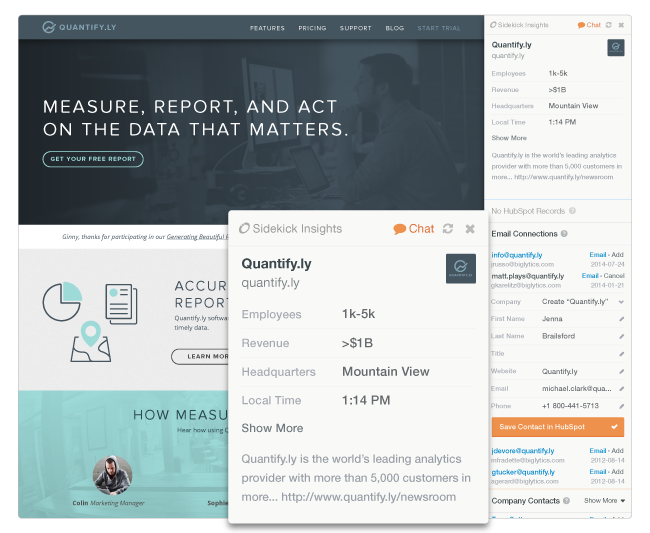The company's new CRM is going after a different kind of company than Salesforce.
The CRM space has been relatively stale. Or maybe unvaried is the better word for it. Which is surprising—considering how customer relationship management has become so crucial for generating sales and retaining customers in today’s world.
Cambridge-based HubSpot was surprised, too. Though its core business is software for inbound marketing, the company has seen sales software as a new area to expand into.
And so, just weeks before its October IPO, HubSpot debuted its own CRM at its Inbound conference. The initial assumption was that HubSpot was trying to steal Salesforce’s thunder, and the company’s entrance into a market historically dominated by Salesforce was interesting for other reasons, too. HubSpot is a Salesforce customer, for one, and Salesforce had also been an investor in HubSpot.
Yes, describing HubSpot’s CRM offering as a declaration of war on Salesforce certainly can make for a juicy story, but it’s not actually the intention behind their new product, HubSpot executives say. Not only does their product offer distinct benefits, it’s also aimed at an entirely different kind of customer.
Differentiators
What sets HubSpot’s CRM apart? For one, it promises to take some of the headaches associated with the technology, like manual entries, logging emails and calls and hunting down deals as they progress in the pipeline.
The tool, which operates in sync with both the company’s marketing platform and Sidekick, connects to Gmail, Google Apps, Outlook and Apple Mail. Its all-encompassing dashboard and dynamic timeline view aim to let sales teams to easily view contacts, deals and tasks as well as identify opportunities and leads at a glance. The software also pulls in all relevant information from Web activity, social media and email, and users can also add customized fields, filter records and easily drag deals through different stages of the sales process. That translates to a hassle-free user experience and a frictionless customer experience.
CMO Mike Volpe stressed that HubSpot’s CRM is designed with sales rep efficiency in mind.
"One of the things we noticed when we were researching CRM products in the space was that reps place an inordinate amount of time logging calls and doing manual work that doesn't actually help them sell better, faster, or more effectively," he said. "To that end, we tried to take the heavy lifting out of manual tasks that don't deliver value to end customers or to the reps."
Most importantly, the product promises to be ultra-intuitive and simple to use, which is no doubt a major draw for smaller companies. But the feature that’s inarguably most attractive is the fact that it’s free. Clearly, HubSpot’s CRM has a target customer — and its not the same as Salesforce’s.
Startups itching to leverage the growth-hacking trend no longer have to shell out for costly CRM tools.
When HubSpot CRM initially launched, hundreds of the company’s customers signed up to participate in the public beta. But in the coming year, the product will be available to anyone, totally free. That means startups itching to leverage the growth-hacking trend no longer have to shell out for costly CRM tools (which, previously, were the only options). Now, they can do more with less.
“If you are an enterprise with significant and complex demands for your CRM, there are lots of great options, but the HubSpot CRM is likely not the best fit for you,” Volpe said. “However, if you are a mid-market company that really wants to grow and transform your business, the HubSpot CRM is a great fit.”
Volpe added that "the traction and feedback has been overwhelmingly good" so far.
"We are learning a lot from our customers using it, and they are seeing meaningful results by using the CRM in conjunction with our core marketing platform,” he said.
The aim for 2015, according to Volpe: Keep up with demand for its CRM from mid-market companies.

No comments:
Post a Comment